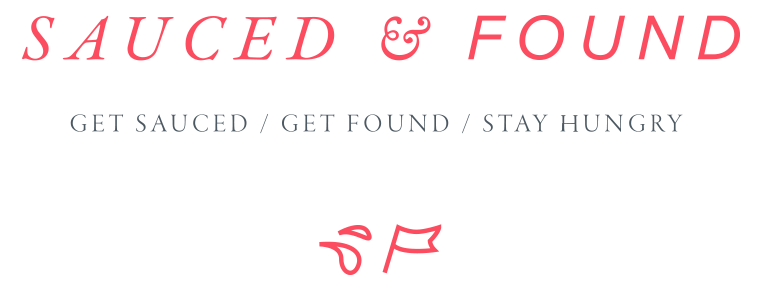Real Neapolitan Margherita Pizza
It has taken me years to develop, test and publish a recipe for a Neapolitan style pizza that could be in a conventional American kitchen. This is partially because ingredients are decidedly different in the United States, especially leavening agents. Mostly, it took me so long to get a pizza recipe right because I am bad at math. Fractions are such a bitch. Converting from the metric system to the non-sensical US “cup” and “tablespoon” system is even bitchier.
I learned to make pizza in Naples. Specifically, at the True Neapolitan Pizza Association. They not only train budding professional pizzaioli but also set the standard for what constitutes a “true Neapolitan” pizza. After learning the proper rising time, kneading procedures, ingredients, dimensions and wood burning oven tactics, I finally became an accidental master of the Neapolitan pizza.
Then I visited America, invited a bunch of people over for pizza and royally f*cked up. The pizza I made was terrible. It was a truly shitty frisbee of nothingness. I had converted the metric system improperly. I had failed to use 00 flour, which makes a big difference in creating a tender pizza. Then I put way too much yeast into my impasto (dough) and produced an amorphous blob that paradoxically turned into an insipid cracker when cooked.
Pizza, as with the finest and most iconic of all Italian dishes, relies on a paucity of ingredients. But quality and sapere fare (know-how) are key.
So, I started from scratch back in America. Using the same techniques, I learned in Naples, I gradually tested ratios of active dry yeast to 00 flour. I experimented with sponges, sourdough starters, rising and proofing times. I played with every type of mozzarella I could get my hands on in America. I concluded that the best and most widely available tomato sauce is Mutti (it’s actually from Parma not Napoli but whatever, it’s the best product out widely available in America for now).
After months of testing in an American kitchen, note-taking and head scratching, I finally produced the Margherita pizza recipe below. This is best for an American kitchen and American ingredients. You don’t need a wood burning oven to produce an excellent Margherita pizza. You do need excellent ingredients, a kitchen scale and practice.
Some of the ingredients I list may require a little additional effort to locate. The result is well worth it. My family in America makes pizza every Friday night. I hope in learning to use the best ingredients to produce the best pizza, your family will discover its own Neapolitan pizza traditions.
That is what Neapolitan pizza making is about after all l'arte di arrangiarsi—the art of getting by. And if you f*ck up, who cares? It’s just pizza and there is always next week.
Margherita Pizza
Makes five individual pizzas
Please note that I list ingredients using both metric and US systems. I highly suggest investing in a kitchen scale with bowl for measuring cup quantities and a micro-scale for measuring spoon quantities. I will list quantities in metric and US measurements. I also include hyperlinks to my favorite ingredients.
Ingredients
For the dough
½ liter (2 cups) cold filtered water
25 grams (2 tablespoons) kosher salt
900 grams (6 cups) 00 Caputo Flour
2 grams (½ teaspoon) active dry yeast
For the topping
½ jar Mutti tomato passata (The true Neapolitan recipe is with peeled whole San Marzano tomatoes. The variety available in the states is spectacularly bad. After much trial and error, my family unanimously prefers Mutti!)
1 tablespoon kosher salt
Corn Meal
250 grams (1 ball) Imported Mozzarella di Bufala or Fior di Latte cheese, drained over a strainer over-night and out of refrigerator
Fresh Basil
Instructions
For the dough
Place water and salt in a large non-reactive bowl
Dissolve salt in water, swirling with fingers until completely resolved
Add 1 cup of flour to salt water and swirl to create a runny paste (this prevents the salt from making direct contact with the yeast, allowing the yeast to properly rise)
Add yeast and gently swirl with fingers to incorporate
Add flour gradually, one cup at a time
Work flour, kneading constantly (the dough will be sticky, that is ok)
Continue adding the flour to the mixture, kneading to incorporate
As the flour forms a cohesive ball and pulls from the edge of bowl, place on a lightly floured work space
Continue kneading dough for ten minutes (you may not use all of your flour and that is just fine, each batch of pizza is different)
As you work the dough in will become smoother and less dimpled
Keep working it and kneading it (you should be sweating now, you are forming the critical gluten web which keeps the dough tender and digestible)
Form the dough into a ball and slam several times against your work surface (in Naples we call this movement slamming the octopus because it resembles to technique used to tenderize fresh octopus)
After several rounds of slamming the dough should resemble a smooth ball of mozzarella
Once it does, cover with a bowl and allow to rise for 30 minutes
After initial rise, knead the dough for one additional minute
Cover with bowl and allow to rise again for 30 minutes
After completing the second rise, roll into one long log
Portion into five equal parts, roughly weighing 250 grams each
Line a baking sheet with plastic wrap and lightly flour
Place dough balls on baking sheet
Cover with a clean damp kitchen towel
Allow to rise for eight to ten hours
For the Pizza Assembly
Mix tomato passata and salt in a medium bowl
Set aside with a ladle
Place a pizza stone in the bottom rack of your oven
Fill a casserole dish with water and place in the bottom left corner of your over below the wrack
Pre-heat oven to 550 degrees Fahrenheit
Place one pizza dough round on a lightly floured work space and flatten into a pancake, palpating with fingers as if playing the piano
Place your palm in the middle of the dough disc and flip in a clock wise motion, rotating by 90 degrees each time, gently extending the pizza (never use a rolling pin)
The diameter of the pizza should reach 10 inches
Lightly dust a pizza peel with corn meal (this prevents the pizza from sticking when you slide it into oven)
Place pizza on top of peel and gently arrange into circle if mangled at all
Ladle a scant amount of sauce onto pizza, enough to cover gently but not soak (less than ¼ cup)
Tear mozzarella into bits and arrange artfully on pizza (do not cover pizza in cheese)
Slide pizza onto stone
Bake for approximately ten minutes, watching carefully (the first pizza is always the most experimental)
Remove pizza from oven
Drizzle with olive oil and garnish with fresh basil leaves
Serve immediately (Neapolitan pizzas are generally served unsliced but you do you boo)
Repeat with subsequent pizza rounds
Eat immediately
And remember pizza is supposed to be fun. Don’t stress. Carbs covered in sauce and cheese almost always taste good anyway!







